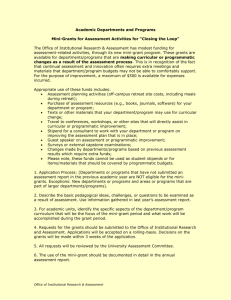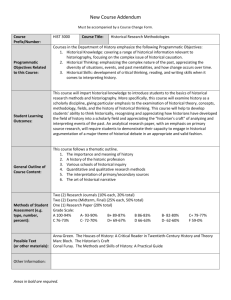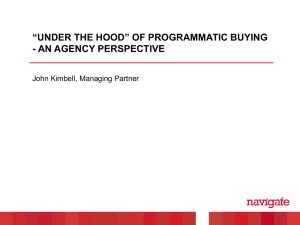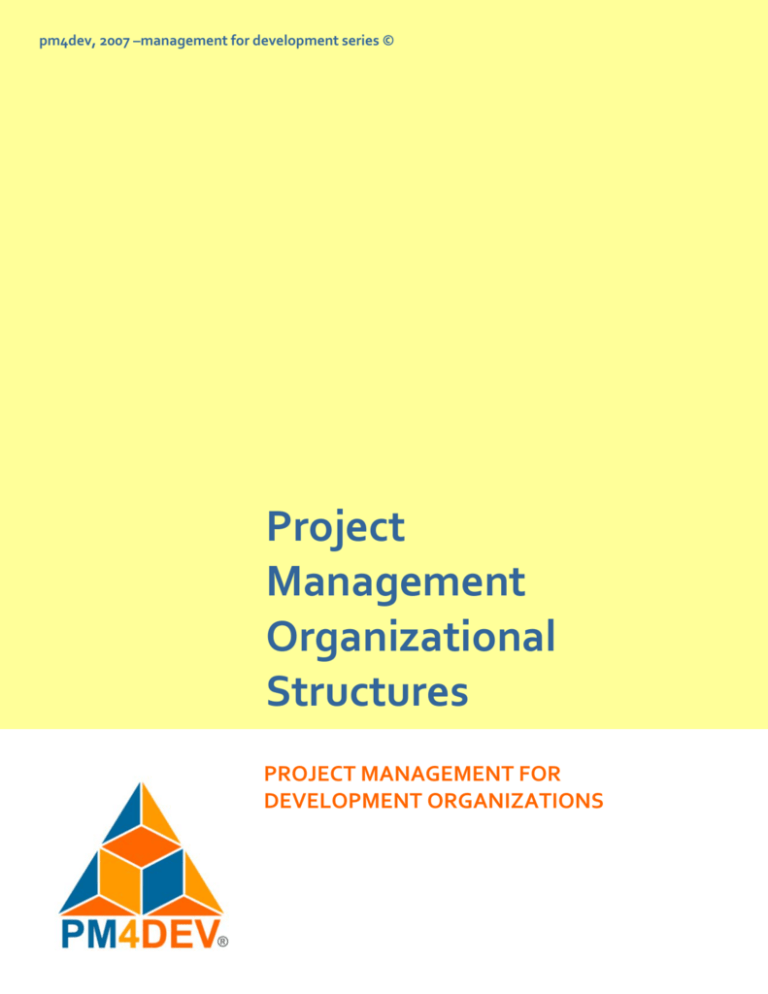
pm4dev, 2007 –management for development series ©
Project
Management
Organizational
Structures
PROJECT MANAGEMENT FOR
DEVELOPMENT ORGANIZATIONS
The Project Management Structures
PROJECT MANAGEMENT FOR
DEVELOPMENT ORGANIZATIONS
A methodology to manage development
projects for international humanitarian
assistance and relief organizations
© IMPACTO4DEV 2007
Our eBook is provided free of charge on the condition that it is not copied, modified, published,
sold, re-branded, hired out or otherwise distributed for commercial purposes. Please give
appropriate citation credit to the authors and to PM4DEV.
Feel free to distribute this eBook to any one you like, including peers, managers and
organizations to assist their project management activities.
www.pm4dev.com
The Project Management Structures
THE PROJECT ORGANIZATION STRUCTURE
A project organization is a structure that facilitates the coordination
and implementation of project activities. Its main reason is to create
an environment that fosters interactions among the team members
with a minimum amount of disruptions, overlaps and conflict. One of
the important decisions of project management is the form of
organizational structure that will be used for the project.
Each project has its unique characteristics and the design of an
organizational
structure
should
consider
the
organizational
environment, the project characteristics in which it will operate, and
the level of authority the project manager is given. A project structure
can take on various forms with each form having its own advantages
and disadvantages.
One of the main objectives of the structure is to reduce uncertainty
and confusion that typically occurs at the project initiation phase. The
structure defines the relationships among members of the project
management and the relationships with the external environment. The
structure defines the authority by means of a graphical illustration
called an organization chart.
A properly designed project organization chart is essential to project
success. An organization chart shows where each person is placed in
the project structure. An organization chart is drawn in pyramid form
where individuals located closer to the top of the pyramid have more
authority and responsibility than members located toward the bottom.
It is the relative locations of the individuals on the organization chart
that specifies the working relationships, and the lines connecting the
boxes designate formal supervision and lines of communication
between the individuals.
www.pm4dev.com
The Project Management Structures
Fig, Project Organization Chart (use another example)
Creating the project structure is only a part of organizing the project;
it is the actual implementation and application that takes the most
effort. The project organization chart establishes the formal
relationships among project manager, the project team members, the
development organization, the project, beneficiaries and other project
stakeholders. This organization must facilitate an effective interaction
and integration among all the major project participants and achieve
open and effective communication among them.
The project manager must create a project structure that will meet the
various project needs at different phases of the project. The structure
cannot be designed too rigid or too lose, since the project
organization's purpose is to facilitate the interaction of people to
achieve the project ultimate goals within the specified constraints of
scope, schedule, budget and quality. The objective in designing a
project structure is to provide a formal environment that the project
manager can use to influence team members to do their best in
completing their assignment and duties. The structure needs to be
designed to help develop collaboration among individual team
members; all in a cost effective way with a minimum of duplication of
effort and overlaps.
The organization chart has a limited functionality; it only shows the
hierarchical relationship among the team members but does not shows
www.pm4dev.com
The Project Management Structures
how the project organization will work, it is for that reason that the
design should consider factors that will facilitate the operation of the
structure; these include communications, information flows,
coordination and collaboration among its members.
FACTORS IN DESIGNING A PROJECT STRUCTURE
There are two design factors that significantly influence the process of
developing a project management structure. These are the level of
specialization, and the need for coordination. The project manager
should consider these factors at the moment of designing the project
organization in order to maximize the effectiveness of the structure.
Specialization affects the project structure by the degree of specialty
in technical areas or development focus; projects can be highly
specialized and focus on a specific area of development, or have
different broad specializations in many areas of development. For large
projects that have multiple specializations or technical areas, each
area may have a different need; from differences in goals, approaches
and methodologies, all of which influence the way the project will
implement its activities. A project that has two components, a
reconstruction and education, will need to manage different
approaches based on the specialization of each one. In the education
component, the needs is for a structure more open and informal,
where the time horizon is longer, with more emphasis on sharing and
generation of new ideas in order to achieve innovation and creativity.
In a reconstruction component, there are specific goals, a need for a
rigid, hierarchical structure, and there is a defined time horizon with
little sharing of ideas. While specialization allows each project
component to maximize their productivity to attain their departmental
goals, the dissimilarities may lead to conflict among the members or
leads of each component. In general, the greater the differences, the
more problems project managers have in getting them to work
together.
Coordination is required to bring unity to the various elements that
make up a project. The project work is organized around a work
breakdown structure (WBS) that divides the overall project goals into
specific activities or tasks for each project area or component; the
www.pm4dev.com
The Project Management Structures
project manager must design an organizational structure that ensure
that the various components are integrated so that their efforts
contribute to the overall project goal. Integration is the degree of
collaboration and mutual understanding required among the various
project components to achieve project goals. Most projects are
characterized by the division of labor and task interdependencies,
creating the need for integration to meet project objectives. This need
is greatest when there are many project components that have
different specializations. The goal of the project management structure
is the achievement of harmony of individual efforts toward the
accomplishment of the group goals. The project manager's principal
responsibility is to develop integrating strategies to ensure that a
particular component or activity is organized in a way that all of the
components, parts, subsystems, and organizational units fit together
as a functioning, integrated whole according to the project master
plan.
TYPES OF PROJECT ORGANIZATIONS STRUCTURES
Of the several factors to consider when deciding on the design of
project organizational structures, especially within an existing
organization, the factor that has a significant is the extent of authority
and responsibility top management is prepared to delegate to the
project manager. An important function of the organizations’ top
management is to design an organization that fully supports project
management. This is done by redesigning the organization to
emphasize the nature of the projects and adapting how roles and
responsibilities are assigned.
The organization needs to define the project manager’s job, degree of
authority and autonomy, and relationship to both the organization,
other projects and to other units in the organization. Upper
management also should specify communication channels, methods of
conflict resolution between the project and the rest of the
organization. Development organizations are usually organized around
programmatic focus areas such as health or education. These areas
are usually called program units and are centered on a specific
development field.
In this environment a project has three
organization structures available for design and all are defined by the
level of organizational authority given to the project manager:
www.pm4dev.com
The Project Management Structures
•
Programmatic based, in which project managers have authority
only within the program focus or area
•
Matrix based,, in which the project manager shares responsibility
with other program unit managers
•
Project based, in which project managers have total authority.
Programmatic Based
The programmatic focus refers to a traditional structure in which
program sector managers have formal authority over most resources. It
is only suitable for projects within one program sector. However, it is
not suitable for projects that require a diverse mix of people with
different expertise from various program sectors. In a programmatic
based organization, a project team is staffed with people from the same
area. All the resources needed for the project team come from the
same unit. For instance, if the project is related to the health area, the
project resources come from the health unit.
Director
Program Manager
Program Manager
Project Manager
Project Manager
Staff
Staff
Staff
Staff
Staff
Staff
Program Manager
Project Manager
Staff
Staff
Project Manager
Staff
Staff
Staff
Staff
The most obvious advantage of programmatic based projects is that
there are clear lines of authority, in large projects the project managers
tend to also be the program unit manager. There is not need to
negotiate with other program units for resources, since all of the staff
needed for the project will come from the same program area. Another
advantage of this type of organization is that the team members are
usually familiar with each other, since they all work in the same area.
www.pm4dev.com
The Project Management Structures
The team members also tend to bring applicable knowledge of the
project.
A major disadvantage of the programmatic based organization is that
the program area may not have all of the specialists needed to work on
a project. A nutrition project with a water component, for instance, may
have difficulty acquiring specialty resources such as civil engineers,
since the only people available will work in their own program unit.
Another disadvantage is that project team members may have other
responsibilities in the program unit since they may not be needed fulltime on a project. They may be assigned to other projects, but it is
more typical that they would have support responsibilities that could
impact their ability to meet project deadlines.
Matrix Based
Matrix based project organizations allow program units to focus on their
specific technical competencies and allow projects to be staffed with
specialists from throughout the organization. For instance, nutrition
specialists may report to one program unit, but would be allocated out
to work on various projects. A health specialist might report to the
health unit, but be temporarily assigned to a project in another project
that needs health expertise. It is common for people to report to one
person in the programmatic unit, while working for one or two project
managers from other projects in different programmatic units.
Director
Program Manager
Program Manager
Staff
Staff
Staff
Staff
Project Manager
Staff
Staff
Project Manager
Staff
Staff
Project Manager
www.pm4dev.com
Program Manager
Staff
Staff
The Project Management Structures
The main advantage of the matrix based organization is the efficient
allocation of all resources, especially scarce specialty skills that cannot
be fully utilized by only one project. For instance, monitoring and
evaluation specialists may not be utilized full-time on a project, but can
be fully leveraged by working on multiple projects.
The matrix based organization is also the most flexible when dealing
with changing programmatic needs and priorities. Additional advantages
to matrix management are: it allows team members to share
information more readily across the unit boundaries, allows for
specialization that can increase depth of knowledge and allow
professional development and career progression to be managed. It is
easier for a program unit manager to loan an employee to another
manager without making the change permanent. It is therefore easier
to accomplish work objectives in an environment when task loads are
shifting rapidly between programmatic units.
The main disadvantage is that the reporting relationships are complex.
Some people might report to programmatic unit managers for whom
little work is done, while actually working for one or more project
managers. It becomes more important for staff members to develop
strong time management skills to ensure that they fulfill the work
expectations of multiple managers. This organization also requires
communication and cooperation between multiple programmatic unit
managers and project managers since that all be competing for time
from the same resources.
Matrix management can put some difficulty on project managers
because they must work closely with other managers and workers in
order to complete the project. The programmatic managers may have
different goals, objectives, and priorities than the project managers,
and these would have to be addressed in order to get the job done. An
approach to help solve this situation is a variation of the Matrix
organization which includes a coordinating role that either supervises or
provides support to the project managers. In some organizations this is
know as the Project Management Office (PMO), dedicated to provide
expertise, best practices, training, methodologies and guidance to
project managers.
www.pm4dev.com
The Project Management Structures
Director
Program Manager
Program Manager
Staff
Staff
Staff
Staff
Project Manager
Staff
Staff
Project Manager
Staff
PMO
Program Manager
Staff
Project Manager
Staff
Staff
The PMO unit also defines and maintains the standards of project
management processes within the organization. The PMO strives to
standardize and introduce economies of scale in the implementation of
projects. The PMO is the source of documentation, guidance and metrics
on the practice of project management and implementation. The PMO
can also help in the prioritization of human resources assigned to
projects.
Project Based
In this type of organization project managers have a high level of
authority to manage and control the project resources. The project
manager in this structure has total authority over the project and can
acquire resources needed to accomplish project objectives from within
or outside the parent organization, subject only to the scope, quality,
and budget constraints identified in the project.
In the project based structure, personnel are specifically assigned to the
project and report directly to the project manager. The project manager
is responsible for the performance appraisal and career progression of
all project team members while on the project. This leads to increased
project loyalty. Complete line authority over project efforts affords the
project manager strong project controls and centralized lines of
communication. This leads to rapid reaction time and improved
www.pm4dev.com
The Project Management Structures
responsiveness. Moreover, project personnel are retained on an
exclusive rather than shared or part-time basis. Project teams develop
a strong sense of project identification and ownership, with deep loyalty
efforts to the project and a good understanding of the nature of
project’s activities, mission, or goals.
Director
Project Manager
Staff
Staff
Staff
Project Manager
Staff
Staff
Staff
Project Manager
Staff
Staff
Project Manager
Staff
Staff
Staff
Staff
Pure project based organizations are more common among large and
complicated projects. These large projects can absorb the cost of
maintaining an organization whose structure has some duplication of
effort and the less than cost-efficient use of resources. In fact, one
major disadvantage of the project based organization is the costly and
inefficient use of personnel. Project team members are generally
dedicated to one project at a time, even though they may rarely be
needed on a full-time basis over the life cycle of the project. Project
managers may tend to retain their key personnel long after the work is
completed, preventing their contribution to other projects and their
professional development.
In this type of organization, limited opportunities exist for knowledge
sharing between projects, and that is a frequent complaint among team
members concerning the lack of career continuity and opportunities for
professional growth. In some cases, project personnel may experience a
great deal of uncertainty, as organization’s or donor’s priorities shift or
the close of the project seems imminent.
www.pm4dev.com
The Project Management Structures
One disadvantage is duplication of resources, since scarce resources
must be duplicated on different projects. There can also be concerns
about how to reallocate people and resources when projects are
completed. In a programmatic focus organization, the people still have
jobs within the program unit. In a project-based organization it is not
always clear where everyone is reassigned when the project is
completed. Another disadvantage is that resources may not be needed
as a full time for the entire length of the project, increasing the need to
manage short term contracts with consultants and other subject matter
experts.
A variety of this pure project approach is temporarily project-based
organizations. This organization consists of a project team pulled
together temporarily from their program unit and led by a project
manager that does not report to a programmatic unit. The project
manager has the full authority and supervision of the project team.
Another design is based on a mixed structure that includes a matrix,
programmatic focus and project based; this mix reflects the need for
more flexibility in a development organization to accommodate different
requirements. For example a health program may have a couple of
projects short term and long term all reporting to the program
manager. An education project may be organized on a matrix using
resources part-time from other units, and a large water project
organized as a fully project-based were all staff report to the project
manager. It is not unusual to find this type of mixed designs on
development organizations.
www.pm4dev.com
The Project Management Structures
MANAGEMENT STYLES
Organization culture is a strong influence on the type of management
styles that can be used on projects. The local culture, customs and
social dynamics also influence the management style; along with the
nature of the project, the nature of the team and the personality and
skills of the project managers. There are four distinct organizational
management styles that have a strong influence on how project are
managed:
•
Autocratic
•
Paternalistic
•
Democratic
•
Laissez-faire
Autocratic or authoritarian, the manager makes all the decisions,
keeping the information and decision making among the senior
management. Objectives and tasks are set and the workforce is
expected to do exactly as required. The communication involved with
this method is mainly downward, from the leader to the subordinate;
this method can lead to a decrease in motivation from the employee's
point of view. The main advantage of this style is that the direction of
the organization will remain constant, and the decisions will all be
similar, this in turn can project an image of a confident, well managed
organization. On the other hand, team members may become highly
dependent upon the project manager’s and supervision may be
needed.
Paternalistic form is where the manager makes decisions in the best
interests of the employees rather than the organization. The manager
explains most decisions to the team members and ensures that their
social and leisure needs are always met. This can help balance out the
lack of staff motivation caused by an autocratic management style.
Feedback is again generally downward; however feedback to the
management will occur in order for the employees to be kept happy.
This style can be highly advantageous, and can engender loyalty from
the employees, leading to a lower staff turnover, thanks to the
www.pm4dev.com
The Project Management Structures
emphasis on social needs. It shares similar disadvantages to an
authoritarian style; employees becoming highly dependent on the
leader, and if the wrong decisions are made, then employees may
become dissatisfied with the leader.
Democratic style is one where the manager allows the employees to
take part in decision-making, where everything is agreed by the
majority. This style can be particularly useful when complex decisions
need to be made that require a range of specialist skills. From the
overall organization’s point of view, job satisfaction and quality of work
will improve. However, the decision-making process is severely slowed
down, and the need of a consensus may avoid taking the best decision
for the project.
Laissez-faire style, the manager's role is marginal and the employees
manage their own areas within the project; the manager evades the
duties of management and uncoordinated delegation occurs. The
communication in this style is horizontal, meaning that it is equal in
both directions, however very little communication occurs in
comparison with other styles. The style brings out the best in highly
professional and creative groups of employees, however in many cases
it is not deliberate and is simply a result of poor management. This
leads to a lack of staff focus and sense of direction, which in turn leads
to much dissatisfaction, and a poor organization image.
PROJECT GOVERNANCE
Project governance can be defined as an organization’s overall process
for sharing decision rights about projects and monitoring the
performance of project interventions. All development organizations
have some form of project governance. Those with effective
governance have actively designed a set of project governance
mechanisms (committees, budgeting processes, approvals, etc.) that
encourage behavior consistent with the organization's mission,
strategy, values, norms, and culture.
The objective of project governance is to establish clear levels or
authority and decision making including the planning, influencing and
www.pm4dev.com
The Project Management Structures
conducting of the policy and affairs of the project. It involves the
people, policies and processes that provide the framework within
which project managers make decisions and take actions to optimize
outcomes related to their areas of responsibility. This is achieved by
defining and identifying the roles, responsibilities and accountability of
all people involved in a project, including their interaction and level of
coordination with internal and external dependencies.
The organization’s management team is responsible for setting up and
supporting the governance structure before the project initiates its
activities to ensure that all key decisions are made at the right time.
The management team defines the project governance in a document
that outlays the roles and responsibilities for decision making in the
project team and stakeholders; this may include the creation of a
project committee and its high level operating rules. A good project
governance document helps projects by defining the procedures to
follow escalation of issues, defines the decision making structure, roles
and responsibilities of each key stakeholder about the different
processes in the project from communications to budget change
authorizations.
Some development organizations may choose the have a standing
project governance committee that oversees all projects and defines
the decision making structure for each project. In this case the
committee may include decisions about project proposal approvals and
supervision of the organizations’ project portfolio in general, including
the selection or appointment of project managers.
***
www.pm4dev.com
The Project Management Structures
PM4DEV.COM
Drawing from our deep understanding of the challenges and the needs for
realistic solutions that can improve the way in which projects are managed
and services are delivered, PM4DEV offers the only adapted Project
Management Methodology for development organizations. Our services
include:
•
Consulting to help organizations assessing the need and the
impact of implementing a Project Management methodology
that will increase the impact of their interventions
•
On Site Training on Project Management Methods to
increase/develop the skills of project managers
•
Customized coaching and mentoring sessions for organizations
that want to develop their own competencies and need a flexible
and personalized learning environment.
To get more information on these services, visit our web site at
www.pm4dev.com/services or send us an email to services@pm4dev.com.
We offer competitive prices and high quality material developed by
international certified experts in Project Management.
www.pm4dev.com
Copyright © 2007 PM4DEV
All rights reserved.
The Project Management Structures
PM4DEV, its logo, and Management for
Development Series are trademarks of
Project Management For Development,
PM4DEV.
This point of view is intended as a
general guide and not as a substitute for
detailed advice. Neither should it be
taken as providing technical or other
professional advice on any of the topics
covered. So far as PM4DEV is aware the
information it contains is correct and
accurate but no responsibility is
accepted for any inaccuracy or error or
any action taken in reliance on this
publication.
This publication contains PM4DEV
copyrighted material and no part of it
can be copied or otherwise disseminated
for commercial purposes.
This Point of view provides a
summary of themes, that in
PM4DEV's experience, have
proved critical in the successful
implementation of project
management methodologies.
It draws on the expertise of
Project management
professionals and provides a
guide to deliver a methodology
that increases the chances of
project success.
For more information about
PM4DEV services, contact:
services@pm4dev.com
or
Paola L. Diaz
paola.diaz@pm4dev.com
www.pm4dev.com
The Millennium Development
Goals aim by 2015 to reverse the
grinding poverty, hunger and
disease affecting billions of
people.
PM4DEV is committed to
provide resources and develop
knowledge and expertise to
support development
organizations in their efforts to
achieve these ambitious goals.
Project Management
For Development Organizations
www.pm4dev.com
info@pm4dev.com


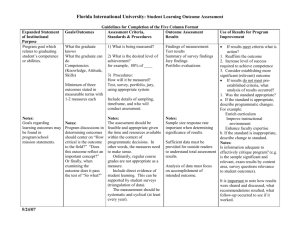
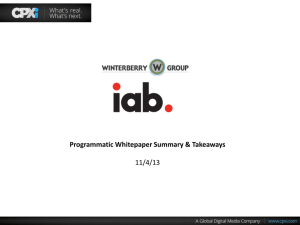
![612:3-5-29. Program Standards [AMENDED]](http://s3.studylib.net/store/data/007495491_1-6b02ab1f993713111546a2a9b18b2949-300x300.png)


